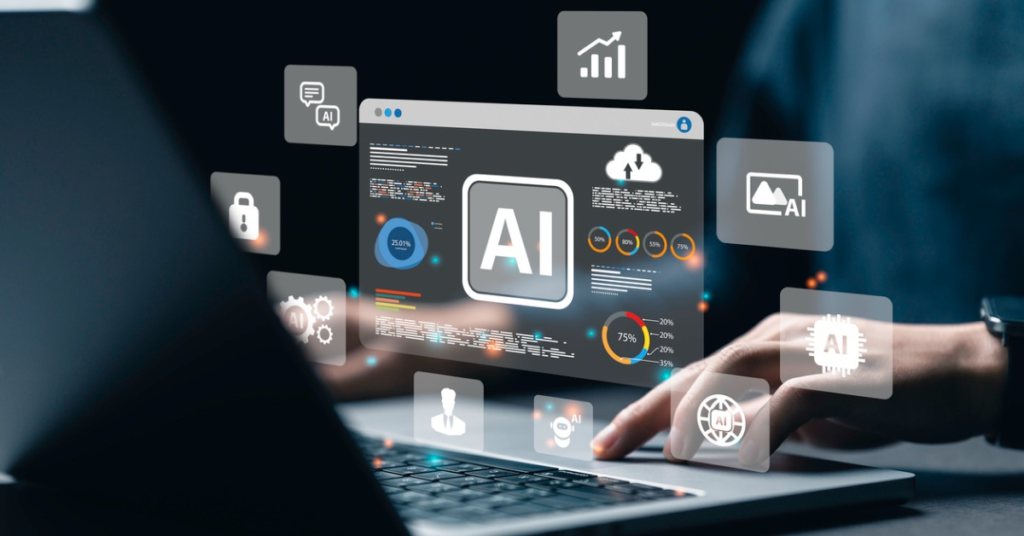The field of Artificial Intelligence (AI) is rapidly advancing, bringing forth a myriad of terminologies that might be challenging to grasp for those new to the domain. From machine learning to neural networks, understanding these terms is crucial for anyone navigating the landscape of AI. In this article, we present an AI glossary that decodes the terminology associated with artificial intelligence, making this complex field more accessible and comprehensible.
Artificial Intelligence (AI):
Contents
- Artificial Intelligence (AI):
- Machine Learning (ML):
- Neural Networks:
- Deep Learning:
- Supervised Learning:
- Unsupervised Learning:
- Reinforcement Learning:
- Algorithm:
- Data Mining:
- Natural Language Processing (NLP):
- Chatbot:
- Computer Vision:
- Bias in AI:
- Explainable AI (XAI):
- Edge Computing:
- Transfer Learning:
- Generative Adversarial Network (GAN):
- Quantum Computing:
- Robotics:
- AI Ethics:
- Conclusion:
AI refers to the development of computer systems that can perform tasks requiring human intelligence. These tasks include learning, reasoning, problem-solving, perception, and language understanding.
Machine Learning (ML):
A subset of AI, machine learning involves the development of algorithms that enable computers to learn from data. Rather than being explicitly programmed, systems using machine learning algorithms can improve their performance over time.
Neural Networks:
Inspired by the human brain, neural networks are computational models consisting of layers of interconnected nodes or artificial neurons. They are used in machine learning to recognize patterns and make predictions.
Deep Learning:
Deep learning is a specialized form of machine learning that involves neural networks with multiple layers (deep neural networks). It is particularly effective in tasks such as image and speech recognition.
Supervised Learning:
In supervised learning, the algorithm is trained on a labeled dataset, where the input data is paired with corresponding desired output. The algorithm learns to map inputs to outputs, making predictions on new, unseen data.
Unsupervised Learning:
Unlike supervised learning, unsupervised learning involves training the algorithm on unlabeled data. The system discovers patterns and relationships within the data without explicit guidance.
Reinforcement Learning:
Reinforcement learning is a type of machine learning where an agent learns to make decisions by interacting with an environment. The agent receives feedback in the form of rewards or penalties, adjusting its actions to maximize rewards over time.
Algorithm:
An algorithm is a step-by-step set of instructions or rules followed to perform a specific task. In AI, algorithms are the foundation of machine learning models.
Data Mining:
Data mining involves the extraction of patterns and knowledge from large datasets. It is often used in machine learning to discover hidden insights.
Natural Language Processing (NLP):
NLP focuses on the interaction between computers and human language. It includes tasks such as language translation, sentiment analysis, and speech recognition.
Chatbot:
A chatbot is a computer program designed to simulate conversation with human users, especially over the internet. They use NLP to understand and respond to user queries.
Computer Vision:
Computer vision enables machines to interpret and make decisions based on visual data. Applications include image recognition, object detection, and facial recognition.
Bias in AI:
Bias in AI refers to the presence of unfair or prejudiced outcomes in algorithms, often reflecting the biases present in the training data.
Explainable AI (XAI):
Explainable AI focuses on developing models and systems that can provide clear explanations for their decisions and actions, making AI more transparent and understandable.
Edge Computing:
Edge computing involves processing data closer to the source of data generation (edge devices) rather than relying solely on centralized cloud servers. It is crucial for real-time processing in AI applications.
Transfer Learning:
Transfer learning is a machine learning technique where a model trained on one task is adapted for a related but different task. It leverages knowledge gained from previous tasks to improve performance on new tasks.
Generative Adversarial Network (GAN):
GANs consist of two neural networks, a generator, and a discriminator, that are trained together. They are used to generate realistic data, such as images or text.
Quantum Computing:
Quantum computing leverages the principles of quantum mechanics to perform complex computations at speeds that traditional computers cannot achieve. It holds potential for solving certain AI problems more efficiently.
Robotics:
In the context of AI, robotics involves the integration of artificial intelligence with physical machines to create robots capable of performing tasks autonomously.
AI Ethics:
AI ethics explores the moral and societal implications of AI, addressing issues such as privacy, bias, accountability, and the responsible development and deployment of AI technologies.
Conclusion:
Navigating the realm of artificial intelligence becomes more manageable with a clear understanding of the terminology that defines this dynamic field. This glossary serves as a starting point for those seeking to decode the language of AI, providing insight into the diverse concepts and technologies that shape the world of artificial intelligence. As AI continues to evolve, staying informed about these terms is essential for anyone looking to engage with, understand, or contribute to the fascinating and rapidly advancing field of artificial intelligence.
